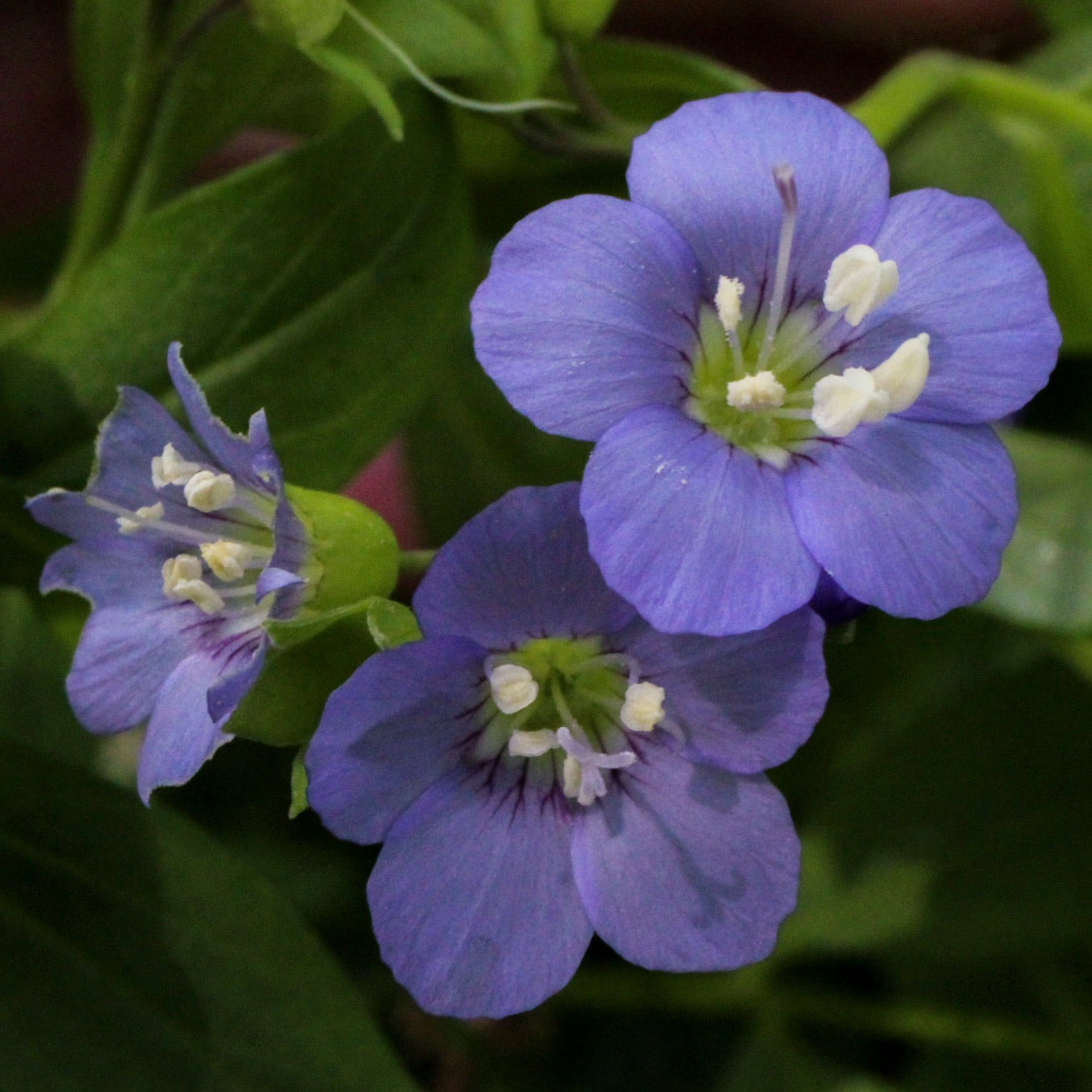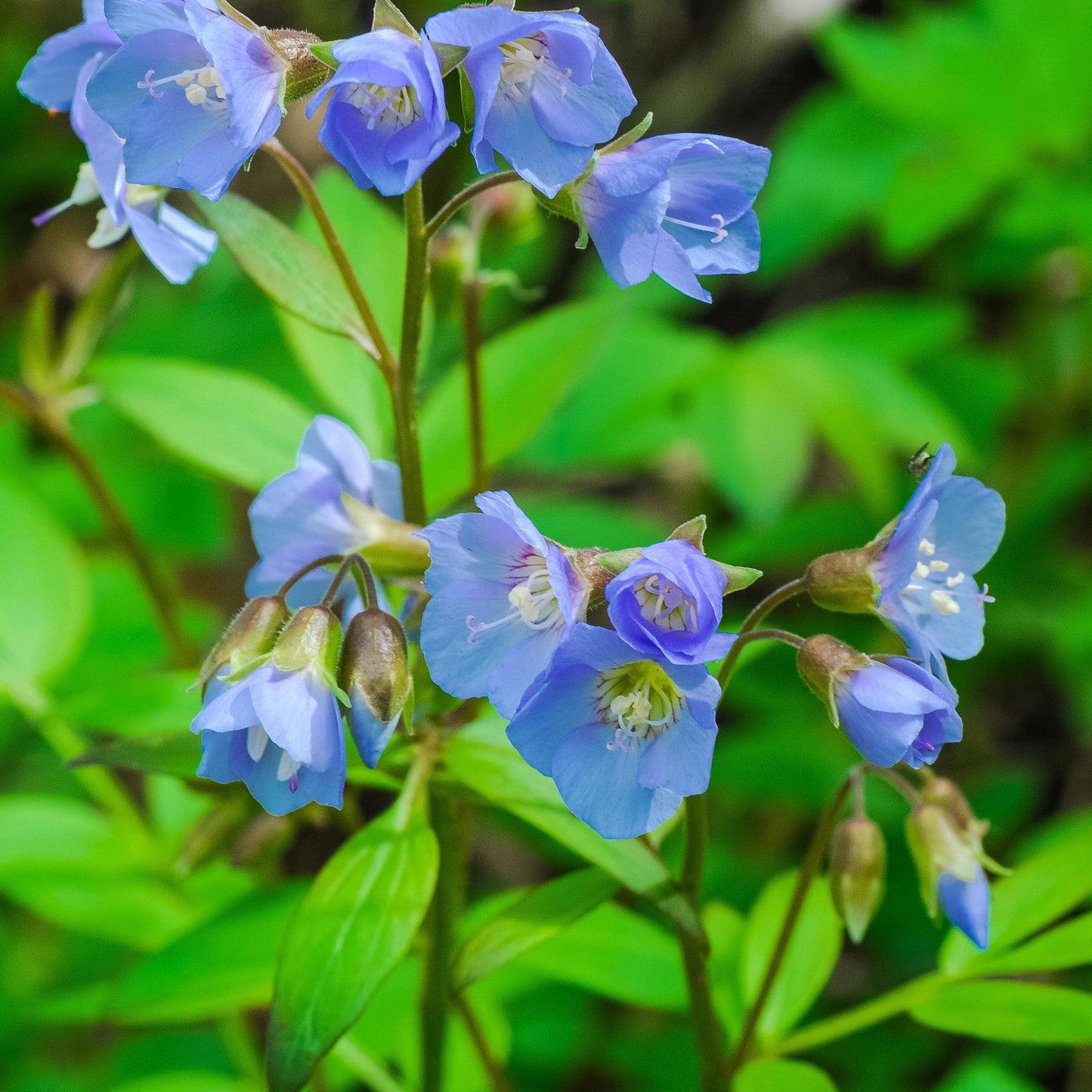Jacob's ladder
Polemonium reptans
Polemonium reptans
Couldn't load pickup availability
Sun/shade: Full sun to full shade
Soil moisture: Medium
Height: 1'
Flowering period: May
Deer resistance: Medium
Dividing the shadows of the forest floor with clean, sharp lines, the handsome foliage of Jacob’s ladder is a stirring backdrop to the plant’s soft blue blossoms. Composed of numerous paired leaflets, the foliage persists throughout the growing season, adding a striking textural element to the home garden.
A native of NE Ohio forests, Jacob’s ladder grows well under conditions of full to partial shade and average to moderately wet soil moisture. In natural settings, Jacob’s ladder may be found growing alongside other spring blooming wildflowers such as foamflower, wild geranium, and ragwort species. In the home landscape, these plants complement one another quite well, bringing spring color to shady parts of the garden.
Jacob’s ladder’s bell-shaped blossoms open in mid-April, offering an early season source of pollen and nectar to many pollinators. In addition to moths and butterflies, the flowers attract bee species such as mason bees. These handsome bees have a metallic sheen and are famous for their pollination efficiency, with reports that as few as 300 mason bees can pollinate as effectively as 90,000 honey bees.
Photo 1 by Ashley Keesling. Photo 2 © Joshua Mayer, CC BY-SA 2.0.



